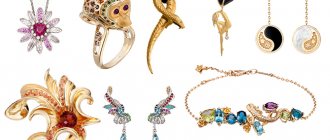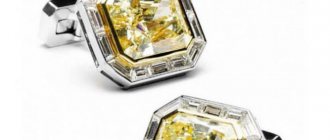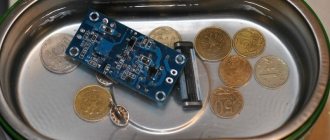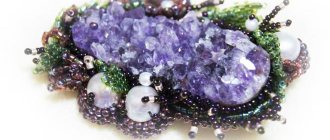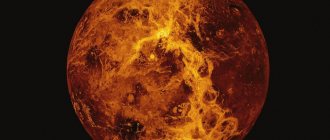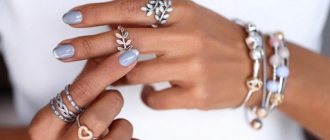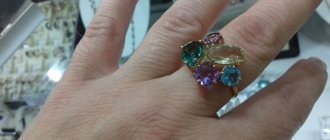Diamond mining has been going on for many centuries - every year tens and hundreds of millions of carats of precious stones rise to the surface from the depths of the earth. But only a few among them can be worthy of the title of exceptional. And only a few can boast of incredible sizes, becoming record holders and objects of desire for millions of people around the world.
Advertising - Continued below
We invite you to get acquainted with the largest diamonds in the world, which have taken their rightful place in the history of gem mining.
"President Vargas", 726.6 carats
A huge transparent diamond was discovered in 1938 on the banks of the Santo Antonio River (outside Brazil). Its weight reached 726.6 carats. The stone was named after the current president of the country, Getulio Vargas. Who was lucky has not yet been established - perhaps they were prospectors or farmers.
The stone was resold many times until it fell into the hands of Harry Winston. As a result, it turned into 29 incredibly beautiful diamonds, the largest of which weighed 48.26 carats. Today the stones are in private collections and museums.
Advertising - Continued below
Alexandrite
Alexandrite was first discovered in 1834 in emerald mines in the Urals. The gem is a variety of chrysoberyl, and its unique color appears due to impurities of iron and chromium in the composition. Alexandrite exhibits the property of metamerism. This means that it changes color depending on the amount of light it receives. When exposed to light, the mineral will take on an emerald hue, so it was initially confused with another variety of beryl.
In the dark, alexandrite looks more like a red ruby with a rich scarlet hue. The largest alexandrite processed by the craftsmen weighs 66 carats. Cost - 12,000 USD per 1 ct.
"River Woye", 770 carats
A diamond weighing 770 carats was found in 1945 in West Africa (the country of Sierra Leone) on the banks of the Woye River, after which it was named. And since it was in this year that the Second World War ended, the precious stone was given an additional name - “Victory Diamond”.
After processing the diamond, 30 magnificent diamonds were obtained, the largest of which weighs 31.35 carats.
Musgravit
Musgravite was found in 1963, but as of 2022, no more than ten samples are known to the world. Scientists attribute musgravite to the group of another most expensive stone - taafeiite. It is impossible to visually distinguish expensive stones; X-ray diffraction and chemical analysis are used. The color scheme is different: green, olive, gray, purple, lilac, pink.
The mineral is hard and almost transparent (rated 8 or 8.5 on the Mohs scale). Pink and lilac samples are the most valuable. The largest musgravite currently found weighs 6 carats. Cost - 6000 USD per 1 ct.
"Great Mogul", 787 carats
Cubic zirconia replica of the Great Mogul diamond
The diamond is considered one of the oldest in the world - it was discovered back in 1640 in Golconda. The weight of the found treasure was 787 carats. Until 1905, it remained the largest diamond in the world. The first owner of the precious stone was the treasurer of Golconda, Margimola.
Advertising - Continued below
Further traces of the stone, which belonged to the Mughal dynasty, are lost. It is believed that he caused wars and other dramatic events. It is also known that the 787-carat diamond was cut into a diamond weighing approximately 279 carats.
Sapphire
Padparadscha is a type of precious corundum, which we also know as sapphire. The name means lotus color in Sinhala, as the first examples had a delicate pink hue. The most valuable minerals are pink and yellow-orange. Blue sapphires are more often found on the gemstone market, which surprise with their depth and brilliance. It is a hard mineral that scores 9 out of 10 on the Mohs scale.
Transparent or translucent gems with a glassy sheen are more common. Silver rings with stones, with a sapphire in the center and a scattering of diamonds around them, have remained classics of jewelry for several years. The cost of padparadscha on the jewelry market can be up to $30,000 per 1 ct.
Constellation, 813 carats
Constellation diamond weighing 813 carats
On November 19, 2015, Canadian diamond mining company Lucara Diamond announced one of the most significant finds of the century - a D-grade gemstone weighing approximately 813 carats. The stone was mined in Botswana at the Karowe mine.
Place of Birth
The gem is found all over the world, but these are, most often, semi-precious opaque specimens with various defects that cannot be cut.
The highest quality rubies are mined in Asia. One of the oldest deposits, according to ancient legend, is located in Burma, near Myanmar.
Large deposits of the king of stones are found in India, Sri Lanka, Thailand, Afghanistan, as well as in East Africa (Kenya and Tanzania).
Russia also has gem deposits - in the Polar Urals. Another stone is found in the Pamir region.
Sierra Leone Star, 968.9
The gemstone was mined in Africa on February 14, 1972. The Star of Sierra Leone diamond became the largest diamond discovered within the country, pushing the previous record holder, the 620-carat Sefada diamond, to second position.
The giant diamond was immediately purchased by Harry Winston for $2.5 million. The stone was cut by the famous master Lazar Kaplan. The result was an emerald-cut diamond weighing 143.2 carats. However, due to a small defect, a decision was made to split it and recut it. In this way, 17 diamonds were obtained, the largest of which weighed 53.96 carats. Today, 6 stones from this series are inlaid into the famous “Star of Sierra Leone” brooch.
Advertising - Continued below
Bixbit
This is a truly beautiful gem. Bixbite is a very rare type of beryl. The stone received its name from the collector Bixby, who became its discoverer. This mineral is valued more than emerald.
Bixbite has a bright red color, which is why it is sometimes called red emerald. This is a fairly fragile stone. It is also characterized by translucency and glassy luster. Bixbits are practically impossible to cut due to their rather small size. It is extremely rare to find specimens that it would be advisable to cut, but only professionals with enormous experience can do this.
Characteristic differences: high quality biscuits have a raspberry color and do not contain foreign inclusions or defects. This mineral is often confused with morganite, which is also classified as beryl.
"Excelsior", 995.2 carats
Rough Excelsior Diamond
Mouawad bracelet with pear-shaped Excelsior I diamond in the center
A 995-carat diamond was found in Africa at the Jachersfontein mine in 1893. The stone immediately became a sensation - it had a perfect bluish-white hue, excellent clarity and an unusual shape.
For a whole decade, the best jewelers and gemologists in London studied the diamond. In 1904 it was sent for cutting. The result was 21 diamonds, weighing a total of 373.75 carats. The largest among them weighs 70 carats and is called Excelsior I.
Ruby by Salvador Dali
One can talk about the boundless power (inherent, as we know, in all muses) of Gala over Salvador Dali, make films and stage plays. The artist perceived the minutes of Gala’s absence as infinity, time stood still, the clock melted... In Dali’s diary you can find an entry about the creation of “Ruby Heart”. “Wanting to thank Gala for the explosive pomegranate apple, I repeated: “What do you want, my heart?” What do you want, my heart? “And she responded with a new gift for me: “A beating heart made of ruby!” Salvador Dali did not keep his beloved, great Gala waiting, and created, using 42 diamonds, 4 emeralds and 46 rubies, the beating “Royal Heart”, dedicating it to the coronation of Elizabeth II.
Lucara diamond, 998 carats
The as-yet unnamed gemstone was mined in November 2020 from the Karowe mine in Botswana. The diamond was one of two specimens weighing more than 500 carats found at the mine this year. At the moment, minimal information is known about the stone, but experts are already suggesting that its possible cost could reach $50 million.
Advertising - Continued below
THE LARGEST EMERALDS IN THE WORLD
The most expensive emeralds include several names: the Great Mogul, Bahia, Theodore and Carnaib Emeralds. Let's look at each of these stones separately.
Emerald Bahia
The same huge emerald that is called “Bahia” is recognized by international experts. It is a nugget whose weight reaches almost 400 kg: this is about 2 million carats. According to the latest data, its market value is about 400 million dollars.
The mineral was found in the Brazilian state of Bahia. The almost meter wide nugget was transported by smugglers to New Orleans, where the find was stored until the flooding caused by Hurricane Katrina.
The giant suddenly “surfaced” at an Ebay auction in 2008: they tried to sell the stone for half the price. Finally, the police seized the controversial trophy, and now law enforcement officers actually own this miracle of nature, despite the courts with the rightful owner: one of the Brazilian holdings.
Emerald Bahia
Emerald of Carnaiba
This large emerald has a noble dark green color, weighs 360 kg and has a height of about 1.3 meters. The giant was pulled out of a deep Brazilian mine called Carnaiba in 2017.
Experts carefully examined the nugget and agreed that the natural specimen should not be processed and should be left untouched. Later, the collectible rarity passed into the hands of a true connoisseur of emeralds, who did not reveal his name. The approximate cost of the stone is also kept secret.
Emerald of Carnaiba
Theodora Emerald
This is one of the largest stones processed by grinding. Visually resembles a melon. The officially declared weight is 11.5 kilograms.
We recommend: WHERE ARE EMERALDS MINED?
The current owner of the stone, found in India, is Canadian Regan Reaney. The reseller was going to make money on resale, but he failed. The professional community doubted the authenticity of the mineral, since the owner of the stone was previously suspected of counterfeiting gems.
Experts almost unanimously classified Theodora as a cheaper type of mineral: white beryl. In 2012, the mineral was put up at another auction with an initial price of $500 thousand, but no buyer was found.
Theodora Emerald
Emerald Fura
In 2011, a large emerald from Colombia weighing 2.27 kg, or 11 thousand carats, came up for auction. The stone inherited its name from a Colombian beauty, an inhabitant of the local latitudes.
The nugget is distinguished by its opacity, which is valued more among beryls than transparency. Transparent beryls are purer, with minimal impurities.
The dark green color of the crystal is in itself a rarity, since most known emeralds have light tones.
Emerald Fura
Great Mogul
The Mogul emerald is known as one of the largest stones with a weight of 217.8 carats and geometric shapes of 5x3.8x3.5 cm. Lines of prayer and a floral pattern are visible on the planes of the stone.
The giant was found in 1695 in distant Colombia, and then brought to India and sold to Muslims close to Genghis Khan. This fragment of the empire of Genghis Khan was for some time the property of the son of Shah Jahan, nicknamed the “Great Mogul”.
Great Mogul
Rockefeller emerald
The mass of the mineral in its original state - before processing - is not known for certain. After cutting, it weighed 3.608 grams, which is approximately 18.04 carats. This very rare green mineral is distinguished by its purity of color without clearly distinguishable shades. The craftsmen were able to emphasize this feature by using a special cutting method: 53 facets.
There is very little information about the origin of this emerald. It is only known that it was discovered in Columbia, and people started talking about it only in 1930, immediately after John Rockefeller himself bought it.
We recommend: CLEANING DIAMONDS at home
The banker ordered jewelers from a famous workshop to make a brooch out of stone for his wife: after the death of Rockefeller’s wife, the jewelry was sold for $5.5 million.
Rockefeller emerald
Lesedi la Rona, 1109 carats
In November 2015, Lucara Diamond Corporation mined another gem in Botswana - an incomparable diamond weighing 1,109 carats (222.2 grams). It was originally thought to contain 1,111 carats.
The stone, named Lesedi la Rona, is currently the second largest in the world in terms of mass and size of all previously discovered diamonds. In September 2022, the gem was sold to ]Graff Diamonds[/anchor] for $51 million.
Black opal
Black opals are the rarest representatives of this group. One of Australia's national treasures. Local residents believed that opal was formed where the Creator of the World set foot, so legends and myths hovered around the mineral from the moment it was found. The gem is formed from solidified silicon dioxide in the voids that form after a volcanic eruption.
It measures 5.5 on the Mohs hardness scale, making it very soft. When dehydrated, the gem cracks, and excess water causes it to swell. Cost - 9500 USD per 1 ct.
Sewelô diamond, 1758 carats
The world's second largest diamond, weighing 1,758 carats, whose name translates as "Rare Find", was mined by Lucara in April 2022 from the Karowe mine in Botswana. In January 2022, the stone was purchased by the fashion house Louis Vuitton with the goal of breaking it into smaller pieces, cutting it and subsequently inlaying it into a special collection of jewelry.
Advertising - Continued below
Unlike Lesedi la Rona, Sewelô cannot boast of excellent characteristics - it was rated by experts as a stone of “variable quality”. However, the diamond contains significant zones of jewelry quality, which allows it to be used in the manufacture of jewelry.
The purchase price was not disclosed, but it is known that 5% of the proceeds from the sale of the jewelry collection will go to Lucara's charitable initiatives in Botswana.
The Pearl of "Peregrina"
Elizabeth Taylor wearing the Peregrina pearl The history of this pear-shaped pearl is surrounded by many legends.
It was believed that one of the slaves in the Spanish colony in Panama found it in 1513 and, thanks to his unique find, immediately received freedom. True, there were no slaves in Panama for many years, so either the date or the story is not entirely accurate. Be that as it may, the pearl soon found its way to Spain: it was presented to the future King Philip II. He also gave the pearl as a wedding gift to the English Queen Mary I Tudor, who would later be called “bloody.” "Peregrina" is translated from Spanish as "wanderer". During its life, the pearl has come a long way, having been in the collections of many famous personalities. In 1558, the pearl was inherited by her sister, Queen Elizabeth I of England. She, as a sign of diplomatic friendship, returned it back to Spain, where “Peregrina” remained for 250 years, decorating the outfits of Spanish queens. In the 1800s, Napoleon's brother Joseph Bonaparte took the pearl to France as a trophy, and later it came back to England - it was purchased by the Duke of Abercorn for his wife. Due to its impressive size—almost 2 centimeters wide and 2.5 centimeters high—the pearl often fell out of the setting. There are even rumors that she once got lost in the sofas of Buckingham Palace.
Works of art, diamonds and private islands: what celebrities give their children Read
In 1969, Peregrina was put up for auction. Actor Richard Burton bought it for $37,000 and gave it to his wife Elizabeth Taylor for Valentine's Day. The actress was a passionate lover of jewelry, and Peregrina occupied a special place in her collection. Elizabeth asked Cartier craftsmen to make a necklace with the pearl so that it would never be lost.
"Cullinan", 3106.75 carats
The world's largest diamond weighs 3,106 carats. It was mined in South Africa in early 1905 at the Premier Mine. The precious stone had a characteristic chip, which indicates that it is a fragment of a larger mineral that has not yet been found. The find was named after the owner of the mine, Thomas Cullinan.
Cutting in its natural form was impossible - there were cracks inside the stone. In 1908, after several months of careful study, the Cullinan was split by Joseph Ascher in the presence of famous jewelers. As a result, 105 diamonds emerged from the original crystal - 9 large and another 96 small, with a total weight of 1063.65 carats. The most famous fragments of the Cullinan are stones numbered 1, 2 and 5: “Great Star of Africa”, “Second Star of Africa”, “Brooch of the Heart”.
Paraiba tourmaline
Paraiba has a turquoise tint and a unique neon glow, characteristic only of this mineral and no other.
Unfortunately, it is not impossible to take a photo that would clearly display this magical glow. At this point in time, Paraiba tourmalines are mined in Brazil, Africa and on the island of Madagascar, but the price of such gems is much lower than Brazilian ones.
The price of small tourmalines reaches an average of 15 thousand dollars , while large specimens cut by eminent masters can be of almost museum value and have a fabulous value.
How to distinguish a fake?
The authenticity of a stone is quite easy to determine.
Determination methods:
- You can examine the stone in daylight using a magnifying glass. You need to look inside the gem. A real ruby will never be perfect; there must be some inclusions inside.
- If you put the mineral in a container of milk, the milk will turn pink.
- From a certain angle , the stone will have a bright color on one side and a pale color on the opposite side.
- If you place the stone on your eyelid , if the ruby is real, it will remain cool for a long time. The artificial one will heat up quickly.
- In a glass glass, the ruby will give off a reddish color.
- When exposed to ultraviolet light, its color will turn orange.
- If you look at a crack , then in a natural stone it will be zigzag, and in a fake one it will be straight and shining.

